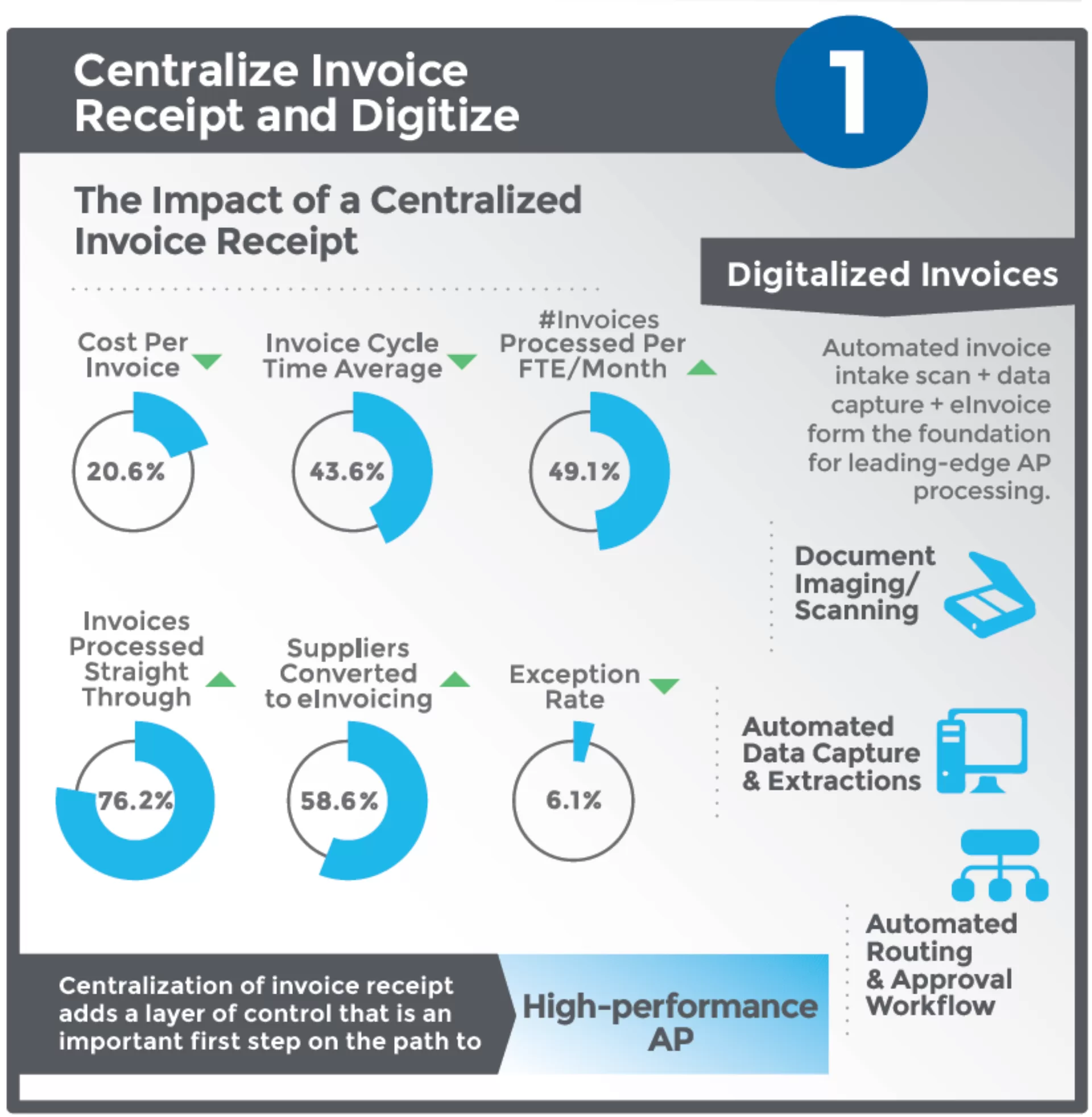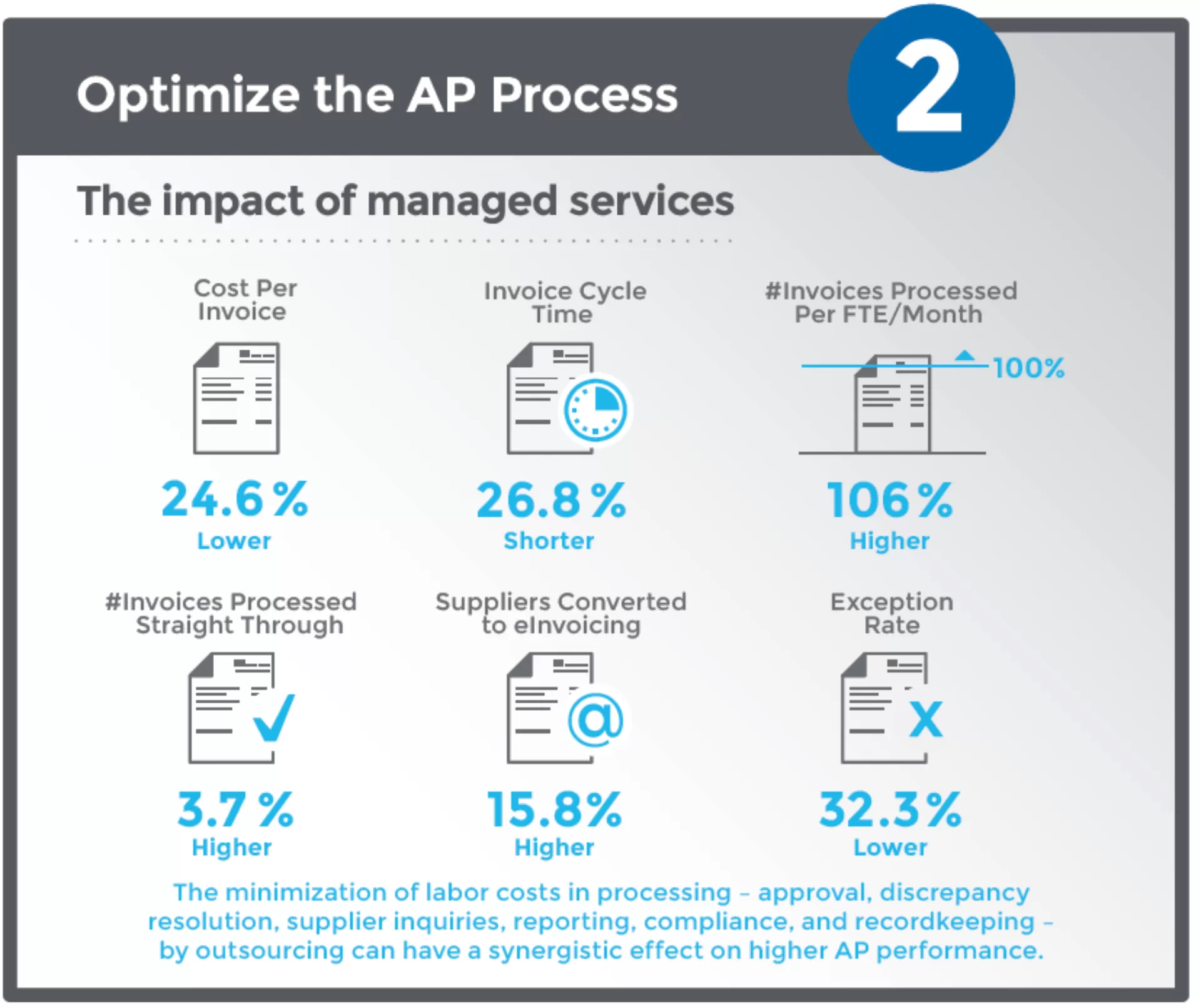High Performance Accounts Payable: Three Keys to Success
What exactly defines “high performance,” how is it measured, and what are the drivers that lead to best-in-class performance? In this report, Canon Business Process Services examines three drivers responsible for efficiency and performance success in high-performing AP departments. We also look at how best-in-class AP functions differ from the average through six operating metrics.
Our insights are based on analysis of the latest AP survey data we sourced and our experience managing the entire AP process or portions of it, such as invoice conversion for leading organizations.




Key Metrics for High-Performance AP
There is a saying that “what gets measured gets improved.” In AP, metrics matter because the process activities can be easily measured, allowing the organization to understand its “current state” while laying the groundwork for its desired “future state.”
AP metrics can be organized into three groups: operational, financial and supplier. Operational metrics are important, and if tracked, they can be a powerful way to engage the larger finance team. While this research paper is centered on the operational metrics, financial metrics help drive AP performance by optimizing AP-related working capital that can have tangible benefits for the bottom line. Supplier metrics are invaluable to procurement for sourcing strategy. The AP paid history database is an ideal source for mining detail-level data about purchases and supplier profiles.
Within AP, there are several underlying “operating performance metrics” that drive core efficiency improvements and ultimately lower the total cost to process an invoice from receipt to payment. By tracking these metrics and developing strategies to improve them, AP groups have an ability to streamline the process and improve performance. For example, a standard metric is the number of invoices processed per full-time employee (FTE). In a manual, paper-based environment, this number is fairly low due to the hands-on tasks. However, in an automated or semi-automated process, most, if not all, of the tasks are greatly reduced requiring significantly fewer staff. The metrics shown in many of the key metrics that AP groups should consider tracking in order to establish a baseline and improve overall performance.
